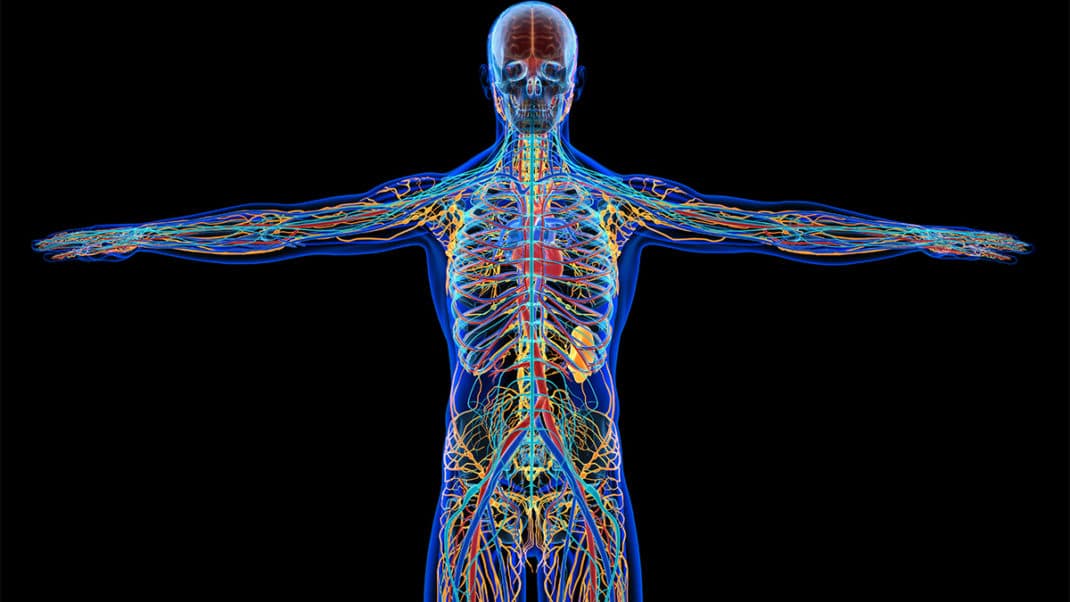The Special Time Slot
Programming with niche medical needs in mind benefits members and your bottom line.

Thousands of people with health conditions or chronic diseases do not know where to find exercise programs that meet their specific needs. Designing specialty programs for individuals with particular medical conditions is a potentially rewarding niche for both your members and your business. Your fitness facility has the opportunity to increase ancillary profits considerably through specialized programming.
Specialized programming intended exclusively for those with specific health conditions creates a win-win situation for both members and facility. Members win because they have a fitness program designed expressly with their needs in mind. Your facility wins with an additional profit center and potential new members who join the program (Atkinson 2008). Furthermore, by creating new classes, charging an additional fee for enrollment and making these programs available to both members and nonmembers, your club has the potential to significantly increase ancillary revenue (Black 2004). Implementing specialized programming also establishes your facility as a credible source of medical information and support in your community.
Below are suggestions for targeting populations with four of the most prevalent conditions that can benefit from exercise: breast cancer, postrehabilitation needs, pregnancy and arthritis.
Breast Cancer Survivors
Excluding cancers of the skin, breast cancer is the most common cancer among women, accounting for more than one in four of the cancers diagnosed in U.S. women (American Cancer Society 2008). This indicates that a significant population needs guidance regarding appropriate fitness regimes to follow during recovery and beyond.
Naomi Aaronson, MA, OTR/L CHT, is the founder of Recovercises, which specializes in working with breast cancer survivors. Aaronson explains that “treatment can wreak havoc on mind and body” and “exercise provides many benefits, including improved breathing, which facilitates lymphatic flow back toward the heart, improved strength and endurance, and a sense of control over a body that seems out of control.”
An excellent program to consider implementing is the Pink Ribbon Program. This exercise module focuses on stretching and strengthening the shoulder, chest, back and abdominal muscles, allowing women to regain full range of motion in the areas affected by breast cancer surgery. Moreover, the program aims to retrain alignment of trunk musculature, improve self-confidence, reduce depression and enhance energy. (For additional resources regarding programs for cancer survivors, see “Fitness for Cancer Survivors” by Kelly McGonigal, PhD, in the November-December issue of IDEA Fitness Journal.).
By offering a program for breast cancer survivors, you increase your marketability and make a significant difference in women’s health and quality of life. To become certified as Pink Ribbon Program instructors, trainers attend an interactive 2-day course featuring lectures and hands-on sessions. The course is offered frequently throughout the year. To find out more, visit www.pinkribbonprogram.com.
Postrehab Patients
Individuals who need muscular conditioning following injury, illness or surgery comprise a surprisingly large segment of the population (Westcott & D’Arpino 2002). You can provide safe and productive programs to restore or at least improve the fitness level of postrehab patients.
Postrehab group training offers a customized exercise program for individuals with similar injuries or conditions. This type of training is designed for clients who have been discharged from a rehabilitation facility or referred by a medical professional. Activities may be land or water based. Fitness professionals who administer and supervise the programs must be educated and have experience with the specific condition. Preferably, an exercise physiologist or physical therapist will oversee and conduct the program. The goal is to create a more functional lifestyle and reduce the risk of re-injury. As patients progress in their strength training, they may perform more specialized resistance exercises and train more intensely.
SouthBay Sports and Physical Therapy, located in Copiague, New York, offers a “Next Step” program, designed for people who have completed physical therapy and want to continue with their recommended exercise but still need supervision. This program serves as a bridge between physical therapy and independent exercise. The facility also features a therapeutic pool that is maintained at 92 degrees for aquatic therapy and group exercise classes.
Pregnant Women
According to the American Pregnancy Association, there are approximately 6 million pregnancies annually in the United States. And the American College of Obstetricians and Gynecologists recommends that pregnant women maintain moderate exercise at least 3 days per week. Your facility can meet the needs of this often underserved market with prenatal programs.
Unlike other fitness programs, the purpose of prenatal exercise is not to improve athletic performance or participate in competitive activities. Instead, the goal is to exercise in moderation to maintain pre-pregnancy fitness levels and prevent excessive weight gain, while focusing on maximum safety.
Prenatal exercise classes should focus equally on cardiovascular fitness, strength training and flexibility. Excellent examples are low-impact group fitness classes with simple choreography; water-based exercises; and prenatal yoga. It is important to include significant warm-up and cool-down segments, since pregnancy increases women’s susceptibility to minor injuries. More specifically, prenatal exercises should concentrate on strengthening the pelvic, abdominal and back muscles, as they take much of the burden during pregnancy and childbirth. Also, no exercises should be performed in the supine position (ACOG 2002).
Pilates Bodies, located in Denver, offers unique pre/postnatal workouts. The sessions tone abdominal and pelvic-floor muscles and strengthen the back, legs and arms. The program also focuses on helping to create a mind-body connection in preparation for motherhood. The workouts are available as private sessions as well as group classes.
Clients With Arthritis
A tailored arthritis program can help relieve pain and fatigue, while improving and preserving joint structure and mobility (WebMD Osteoarthritis Health Center 2008). Regular activity also replenishes lubrication to the cartilage of the joint and reduces stiffness and pain. Ideally, an effective arthritis exercise program will include range-of-motion exercises, strengthening exercises and hydrotherapy.
Range-of-motion exercises help maintain normal joint function. Gently straightening and bending the joints in a controlled manner as far as they comfortably go conditions the affected joints. Throughout the course of the program, the joints are stretched progressively farther until normal or near-normal range is achieved and maintained.
Strengthening exercises are important because strong muscles help keep weak joints stable and comfortable and protected from further damage. The exercises should target the specific muscle groups surrounding the affected joints. Isometric exercises are beneficial, as they involve no joint movement; instead, they strengthen muscle groups by using an alternating series of isolated muscle flexions and periods of relaxation.
Hydrotherapy is ideal for clients with severe arthritis, since water can be gentle on painful joints. The buoyancy of water takes some weight off the joints, while providing the opportunity for resistance training. When instructing people with arthritis, it is important to avoid highly percussive activities and rapid or repetitive movements of the affected joints. Joint protection strategies should receive special emphasis.
For further guidance in providing a successful arthritis program, consider looking into The Arthritis Foundation Exercise Program. This program uses gentle activities to increase joint flexibility, range of motion and muscle strength through exercises done while sitting, standing or on the floor. To teach these structured classes, instructors must successfully complete an Arthritis Foundation instructor workshop. Visit www.arthritis.org for further information.
With a little creativity and minimal expense, unique specialized fitness programming will strengthen the image and credibility of your facility and enhance your members’ overall quality of life.
- Hire instructors who are certified and have an extensive background in teaching exercise to your target population.
- Keep emergency information on file for each participant.
- Conduct a member survey to determine the types of specialized programs that most interest your members.
- Make safety a top priority by preventing participants from placing personal belongings where someone could trip over them and by adapting all exercises to each person’s fitness level.
- Encourage participants to enroll with a friend. They are more likely to stick with the program over the long term.
- Since most members consistently visit the club during the same time period, offer special programs and classes at least 3 days per week and at various times throughout the day.
- Provide regular health screenings for specific groups, such as bone density scans or blood pressure testing for seniors, or prostate specific antigen (PSA) screenings for men.
- Create mailings throughout the year that focus primarily on your specialized programming.
- Partner with local medical professionals, including rehabilitation specialists and physicians, who can provide educational workshops on medical conditions that can be improved through exercise.
- Track each member’s progress through regular assessments that focus specifically on the member’s condition.
References
ACOG Committee. 2002. Opinion no. 267: Exercise during pregnancy and the postpartum period. Obstetrics & Gynecology, 99, 171-73.
American Cancer Society. 2007. Breast Cancer Facts and Figures 2007-2008. Atlanta: American Cancer Society Inc.
Atkinson, D. 2008. Profiting from Disease-Based Programs. Fitness Management (Dec.).
Black, S. 2004. Growing Profits Through Group Programming. Fitness Management (May).
WebMD Osteoarthritis Health Center. 2007. Arthritis: Arthritis to treat exercise. www.webmd.com/osteoarthritis/exercise-treat-arthritis; retrieved Sept. 5, 2009.
Westcott, W., & D’Arpino, T. 2002. Strength training for physical rehabilitation. Fitness Management (Feb.).






